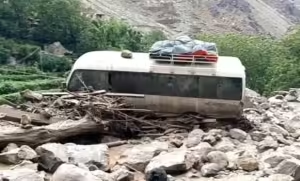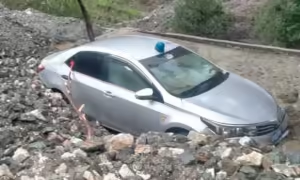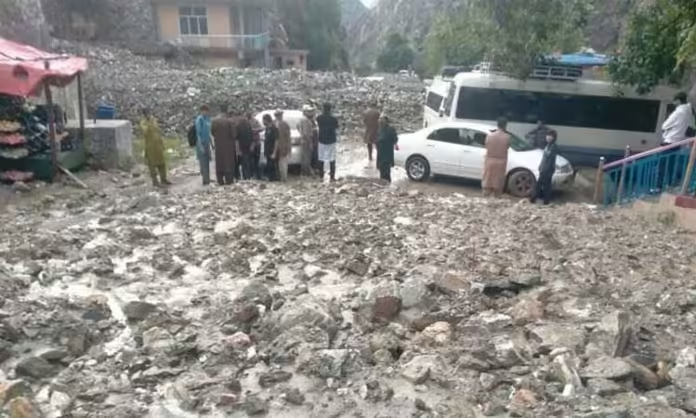Nature’s Wrath Unleashed on Babusar Road with Flash Flood in Gilgit-Baltistan – Claims Lives and Tourists
In a shocking twist of fate, Gilgit-Baltistan was shaken by a catastrophic natural disaster as a torrential flash flood hit the picturesque Babusar Road, engulfing eight tourist cars and leaving debris behind. This shocking tragedy has marred the otherwise peaceful and majestic terrain of Pakistan’s northern border, which had been thronged by local tourists in search of summer respite.

Increasing Death Toll and Frantic Search Operations
At least three are dead and over 15 missing, according to initial reports, as rescue efforts go on day and night in extreme conditions. Eyewitnesses witness a horrific spectacle: an unexpected wave of murky water rushing down the mountainous landscape, sweeping everything with it cars, luggage, and hopes of a happy rescue.
Gilgit-Baltistan Disaster Management Authority (GBDMA) rescue vehicles, police, and army troops were rushed to the scene. Yet, with the terrain of the region being hilly and continuous rains making it difficult to reach, the operations continue to be an uphill task. Helicopters and heavy machinery have been deployed to facilitate the search for missing people and rescue trapped tourists.

Babusar Road: From Gateway to Nightmare
Babusar Road, which is famous for its stunning scenery and a vital road linking Khyber Pakhtunkhwa with Gilgit-Baltistan, is heavily traveled by tourists in summer. The monsoon season turns this road into a high-risk area, where the risk of landslides and unexpected floods is considerable.
This recent Babusar Road flash flood again reflects the susceptibility of infrastructure at high-altitude zones during unpredictable weather patterns. The authorities have now sealed off the disaster zone and are asking all drivers to delay non-essential travel until the situation returns to normal.
The Human Side of the Tragedy
Families and friends of the disappeared are living in terror, hoping against hope as search efforts go on. Local residents adjacent to the flooded area have been amazing in terms of solidarity, providing food, shelter, and emotional comfort to stranded tourists and rescuers alike.
One survivor, Ali Shah, testified, “The water came like a monster. Within seconds, the road was gone, and so were the vehicles. I barely escaped with my life.” His shaking voice resonates the shared trauma of those who lived to tell this fearful experience.
Flash Flood Frequency and Climate Change
This tragedy also highlights the rise in the number of flash floods that occur in mountainous areas a disconcerting outcome of climate change. Thawing glaciers due to rising temperatures are increasing, loosening slopes, and strengthening monsoon rains. Experts in the environment caution that the lack of adaptive infrastructure and improved early warning systems could lead to these tragedies becoming even more common and deadly.
Government Appeals and Travel Advisories
In reaction to the catastrophe, Gilgit-Baltistan authorities have issued a red alert, warning utmost care and suggesting tourists desist from all non-essential travel in hilly areas within the ongoing monsoon wave. They’ve also asked local tour operators to suspend all trips to flood-risk areas until the weather improves.
A Sobering Reminder
The Babusar Road flash flood is a harrowing reminder of nature’s volatile wrath. While the splendor of the north beckons to many, it also calls for respect for its threats particularly during monsoon. For the time being, the focus will be on rescuing the living, finding the missing, and figuring out how to avoid such mishaps in the future.
As the country offers prayers for the victims, let us take this as a reminder of improved preparedness, climate resilience, and more respect for nature’s capabilities.
Stay tuned with Pakistan Updates for all the latest on this story and other key national news.




